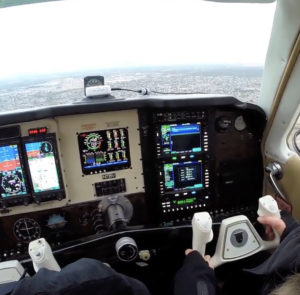
- You are planning an IFR flight to McCall, Idaho (KMYL), which has multiple RNAV GPS instrument approach procedures. You’ve filed Boise airport (KBOI, 80 nm away) as your alternate airport because the KMYL weather looks close to minimums at your ETA. How good would the weather forecast need to be at KMYL – and within what time frame – in order for you to not have to file an alternate airport on your IFR flight plan?
- When the weather is close to minimums at your ETA, you are required by FAR 91.167 to file an alternate airport. In this situation, how much fuel are you required to carry?
- If your primary airport does not have a TAF, how do you determine if an alternate is required?
- When navigating on a Victor Airway, the controller states, “Radar contact lost.” When you next pass over a compulsory reporting point, what should you report?
- How often must your aircraft registration be renewed?
- You are operating a portable ADS-B IN receiver in your aircraft and a suitable device to display traffic. You are not guaranteed reception or display of all traffic data within 15 NM of your aircraft position unless you are also operating what piece of equipment?
ANSWERS: 1. Use the 1-2-3- rule: From one hour before to one hour after your ETA at the primary airport (KMYL), a forecast ceiling of at least 2000 feet, and a forecast visibility of at least 3 miles. 2. Enough to complete the flight to the primary airport and then fly on to the alternate airport and fly after that for 45 minutes at normal cruising speed. 3. Refer to the GFA (Graphical Forecast Analysis) which replaced the FA (Area Forecast.) 4. Think “PTA-TENN: Call sign, Position (Gardner VOR), Time (22:15Z), Altitude (6000), Type of flight plan (IFR), ETA & Name of next fix (Estimating Lebanon 23:05Z), Name only of the following fix (yep, that’s the 3rd fix you are mentioning) (Burlington next), [Pertinent Remarks, e.g. turbulence]. It helps to use a kneeboard with reference materials printed on it – or make a cheat sheet to keep with your checklists. 5. Every 3 years. 6. An ADS-B OUT transmitter.



